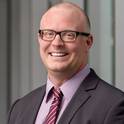
Background: The purpose of this case series is to highlight the shared decisionmaking process made between clinician and patient when determining the appropriateness of telehealth, in-person care, or a hybrid model. Case Descriptions: This case series describes 3 patients diagnosed with various musculoskeletal conditions causing pain and participation restrictions. Two patients received a hybrid model of care and one patient received telehealth physical therapy only. Outcomes: Two patients achieved desired goals and resumed participation in previously restricted activities. One patient did not achieve desired goals and eventually underwent total hip arthroplasty. Discussion: Case complexity, symptom irritability and severity, and changes in functional status can help determine the optimal mode of care. Patients with more complex presentations might benefit from in-person visits to achieve goals. Clinical Relevance: A clinical reasoning framework can guide shared decision-making to determine whether telehealth, in-person care, or a hybrid model is most appropriate to produce desired outcomes.
Available at: http://works.bepress.com/todd-davenport/246/
